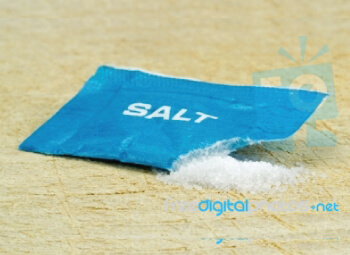Salt is in the news again. Can we shake our salt habit and reduce sodium in our diets?
We’ve all heard enough about salt to know that too much of it is bad for us. Still, the average American’s daily salt intake is approximately 3,400 of sodium daily—yes, the two words, “salt” and “sodium,” are typically used interchangeably, for salt is mainly sodium. That consumption, about 1.5 teaspoons per day, is way above what the American Heart Association recommends at 1,500 mg per day.
According to the Cleveland Clinic, “when you eat too much salt, which contains sodium, your body holds extra water to “wash” the salt from your body. In some people, this may cause blood pressure to rise. The added water puts stress on your heart and blood vessels.”
Excess sodium may be responsible for nearly 150,000 premature deaths each year.
Reduce salt intake

A new Institute of Medicine report says we are trying. Very few of us actually hammer that salt shaker vigorously over our foods. The culprits are the restaurant and food industries—processed food is a main offender. Sodium adds flavor, texture, and works as a preservative and thickener, and sometimes, we don’t even taste it. It causes us to drink more alcohol and soda, spending more when we go out. The report suggests moderation in salt intake—as in all things. Certain health conditions “need” more salt.
Have you looked at the sodium content on dishes you order? The numbers are absolutely astounding if you check out popular restaurant chains—they’re nearly all guilty. Public health stakeholders say enough’s enough, that’s now’s the time to reduce sodium in our diets and save lives.
Food industry to blame?
Will we have “withdrawal” if we reduce sodium in our diets?
The institute’s report says “Manufacturers and restaurants/foodservice operators need to meet… standards so that all sources in the food supply are involved and so that the consumer’s taste preferences can be changed over time to the lower amounts of salt in food. The goal is to slowly, over time, reduce the sodium content of the food supply in a way that goes unnoticed by most consumers as individuals’ taste sensors adjust to the lower levels of sodium.”
“The voluntary approach has failed,” added Stephen Havas, M.D. in a news release. He’s a research professor of preventive medicine at Northwestern University Feinberg School of Medicine and was a co-author on a new paper published in JAMA Internal Medicine that finds sodium content of food is as high as it’s ever been.
“The study demonstrates that the food industry has been dragging its feet and making very few changes,” he says. “This issue will not go away unless the government steps in to protect the public. The amount of sodium in our food supply needs to be regulated.”
++++++++++++++++++++++++++++
(Thanks! Image courtesy of Grant Cochrane, FreeDigitalPhotos.net)